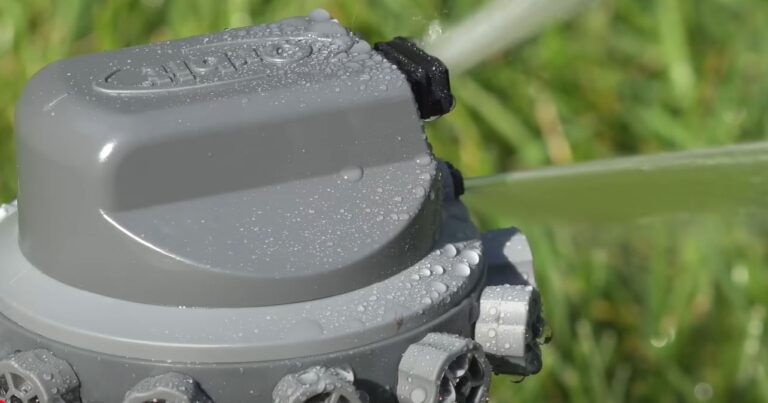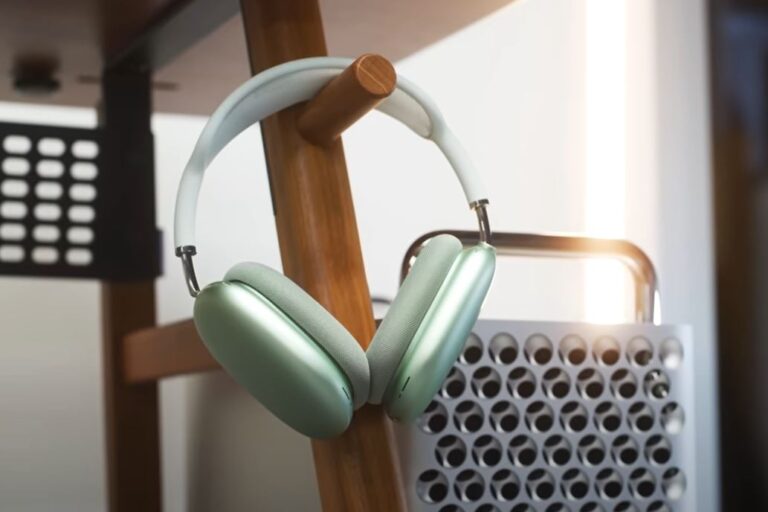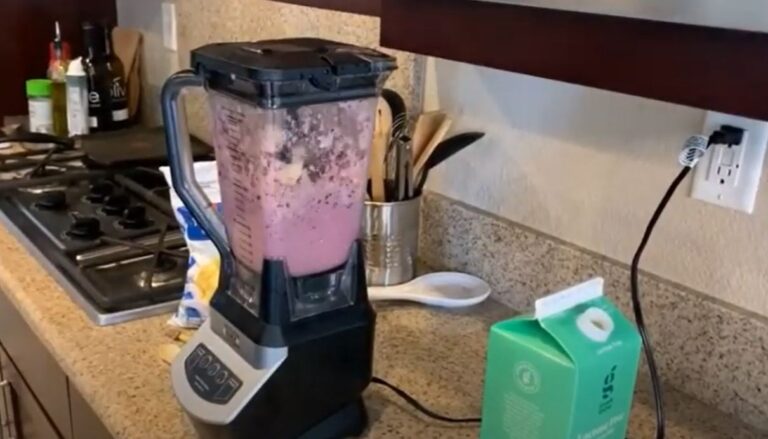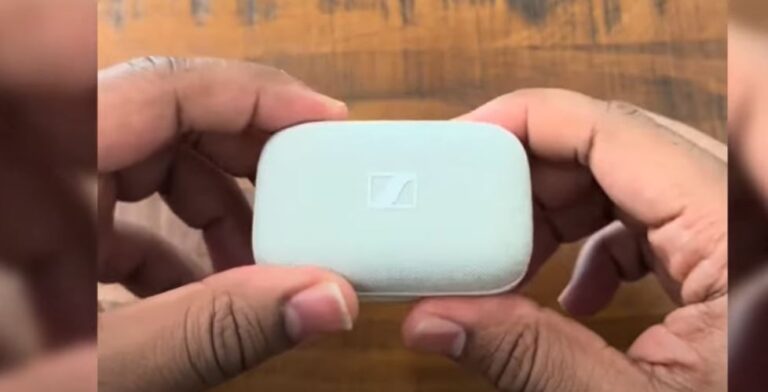How Much Does It Cost to Steam Tablecloths?
The art of a beautifully set table lies in the details. A stunning centerpiece, elegant place settings, and a flawless tablecloth work together to create an unforgettable atmosphere. Yet, nothing can detract from the elegance of an event more quickly than a wrinkled or creased tablecloth. While a tablecloth is an investment in style, keeping it fresh and crisp often requires more than just a simple wash and fold.
Professional steaming is the secret to achieving that perfectly polished, wrinkle-free look that is essential for weddings, formal dinners, and professional events. But for many, the question remains: what is the cost of this service? Is it a worthwhile expense, or is it better to handle it yourself?
This comprehensive guide will break down everything you need to know about the cost of professional tablecloth steaming. We will explore the average prices, the factors that influence them, and provide a detailed analysis to help you decide if paying for professional steaming is the right choice for your next event.
Table of Contents
ToggleUnderstanding Tablecloth Steaming
Before we discuss the cost, it is crucial to understand what steaming actually does and why it is often the preferred method for preparing linens for a special occasion. Steaming is a gentle yet highly effective way to remove wrinkles, and it offers significant advantages over traditional ironing.
What Steaming Does Compared to Ironing
While both ironing and steaming can remove wrinkles, they do so through different mechanisms and produce different results.
- Ironing: An iron uses a combination of heat and direct pressure to flatten a fabric’s fibers. This process is highly effective at creating a crisp, sharp finish and is ideal for removing stubborn, set-in creases. However, the direct pressure can also crush or damage delicate materials, and an overheated iron can easily scorch fabric.
- Steaming: A steamer uses hot water vapor to penetrate a fabric’s fibers, relaxing them and causing the wrinkles to fall out naturally. There is no direct pressure on the fabric, which makes it a much gentler method.
- Benefits of Steaming vs. Ironing (Detailed Pros and Cons):
- Steaming Pros:
- Gentle on Fabrics: Because there is no direct pressure, steaming is the safest way to remove wrinkles from delicate or specialty fabrics like satin, lace, or sequin-embroidered tablecloths. It will not damage the fibers or leave behind burn marks.
- Fast and Efficient: A professional steamer can cover a large area in a very short amount of time, making it an efficient solution for preparing multiple tablecloths.
- Preserves Fabric Integrity: Steaming does not flatten the fabric’s weave, allowing the material to maintain its natural texture and drape, which is perfect for achieving a soft, elegant look.
- Removes Odors: The hot steam helps to sanitize and deodorize fabrics, leaving them smelling fresh.
- Steaming Cons:
- Doesn’t Create a Crisp Finish: Steaming will not produce the sharp, starched look that an iron does. If you want perfectly pressed pleats or creases, an iron is the better tool.
- Less Effective on Stubborn Wrinkles: While great for general wrinkles, steam can be less effective on very deep, old creases that have been set into the fabric for a long time.
- Steaming Pros:
Benefits of Steaming for Different Fabrics
The choice to steam or iron often depends on the type of fabric you are working with.
- Linen and Cotton: These natural fibers are prone to wrinkling, and steaming is an excellent way to prepare them. Steaming will give them a soft, natural, and elegant look that is not as stiff as an ironed tablecloth.
- Satin, Silk, and Velvet: These delicate fabrics are very difficult to iron without leaving shiny marks or damaging the pile. Steaming is the only safe and effective way to remove wrinkles from these materials.
- Polyester and Blends: Polyester is highly wrinkle-resistant, but it can still get creases from being folded. Steaming is the most efficient way to get a smooth finish, as the hot vapor helps the synthetic fibers return to their original, wrinkle-free state.
When You Should Steam Instead of Press
There are specific situations where a professional steaming is a much better choice than a press.
- For a Soft, Flowing Drape: Steaming is ideal when you want your tablecloth to have a natural, elegant drape that flows beautifully from the table.
- For Delicate Fabrics: You should always choose steaming over pressing when working with delicate or embellished fabrics to prevent permanent damage.
- For a Quick Touch-Up: Steaming is perfect for a quick refresh upon arrival at an event venue. A professional can easily remove any creases that may have formed during transport, ensuring a flawless presentation.
Average Cost of Steaming Tablecloths
The cost to have a tablecloth professionally steamed varies widely based on several key factors. Understanding these factors will help you budget for your event and choose the most cost-effective solution.
Professional Laundry or Dry Cleaning Services
Local dry cleaners are the most common providers of steaming services for individual or small numbers of tablecloths. They typically base their prices on the size of the tablecloth, as a larger item requires more time and effort to steam.
- Price Per Tablecloth (Standard Sizes):
- Small Tablecloths (up to 60 inches): For a small, round or square tablecloth, you can expect to pay between $5 and $10 per piece.
- Medium Tablecloths (60–90 inches): For a standard 6-foot rectangular or a large round tablecloth, the price typically ranges from $10 to $20 per piece.
- Large Tablecloths (90 inches and above): For oversized or floor-length tablecloths, the cost can be $15 to $30 per piece, depending on the size and fabric.
- Detailed Pros and Cons of Using a Dry Cleaner:
- Pros:
- Convenient: Dry cleaners are readily available in most locations, making it easy to drop off and pick up your linens.
- Good for Small Quantities: This is a cost-effective option if you only have a few tablecloths that need to be steamed.
- Cons:
- Can Get Expensive: If you have a large number of tablecloths, the per-piece cost can add up quickly, making it a more expensive option than other services.
- No Discounts: Dry cleaners may not offer significant discounts for bulk orders.
- Pros:
Extra Costs for Oversized or Specialty Fabrics
While standard pricing provides a good estimate, you should always be prepared for potential extra fees.
- Oversized Tablecloths: A tablecloth that is larger than 120 inches will likely have a surcharge due to the extra labor and space required to handle it. You may be charged an additional $5 to $10 per piece for these extra-large items.
- Specialty Fabrics: Delicate or specialty fabrics, such as lace, sequins, or silk, will almost always incur a premium. The provider will charge more for the extra care required to steam these materials without damaging them. This can add an additional 25% to 50% to the base steaming cost.
Event Rental Companies Steaming Fees
Event rental companies often provide linens as part of their services. Their pricing model for steaming is different from a dry cleaner’s.
- Price Per Tablecloth (Rental Service): Many rental companies will include steaming in their rental fee. If they do not, they will often charge a flat-rate steaming fee that is much lower than a dry cleaner’s per-piece cost. A rental company may charge an additional $2 to $5 per tablecloth for a professionally steamed finish.
- Detailed Pros and Cons of Using a Rental Company:
- Pros:
- Ultimate Convenience: The linens are delivered to your venue professionally steamed and ready to be placed on the tables. You don’t have to worry about transporting them or finding a dry cleaner.
- Cost-Effective for Bulk: Because rental companies are already dealing in large volumes, their steaming fees are often significantly lower than a dry cleaner’s.
- Cons:
- Less Control: You don’t have control over the steaming process and may not be able to get a specific look or finish.
- Only for Rentals: This option is only available if you are renting your tablecloths from a linen service.
- Pros:
Flat Rate vs. Per-Piece Charges
When you are budgeting for a large event, it is crucial to understand the difference between flat-rate and per-piece charges.
- Per-Piece Charges: This is the most common pricing model. You are charged a set amount for each individual tablecloth. This is simple and easy to understand but can get expensive for large orders.
- Flat Rate Charges: Some specialty linen services or dry cleaners will offer a flat rate for a bundle of linens. For example, they may charge $150 for 20 tablecloths, regardless of their size. This can be a much more cost-effective solution for a large event.
- Detailed Comparison (Flat Rate vs. Per-Piece):
- Example Scenario: You have a formal event with 20 medium-sized tablecloths.
- Per-Piece Cost: If your local dry cleaner charges $15 per tablecloth, your total cost would be $300.
- Flat-Rate Cost: If a specialty service offers a flat rate of $200 for 20 tablecloths, you would save $100 by choosing their service.
- Tip: Always ask for a quote for both a per-piece and a flat-rate charge to determine which is the most cost-effective option for your specific needs.
Mobile or On-Site Steaming Services
For many events, especially weddings or corporate gatherings, the biggest challenge is having perfectly steamed linens at the exact moment they are needed. This is where on-site or mobile steaming services come in, offering a premium solution for a flawless presentation.
What are mobile steaming services?
Mobile steaming services are professional linen preparation companies that come to your venue with all the necessary equipment to steam your tablecloths on-site. This is a high-end service designed for ultimate convenience, eliminating the need for you to transport dozens of delicate, freshly steamed linens from a dry cleaner to your event location. The professional arrives at the venue and works with the venue staff or event planner to ensure the tablecloths are perfectly set.
Cost and Pricing Structure
The convenience of a mobile service comes at a premium. Unlike a dry cleaner that charges a low per-piece rate, a mobile service’s pricing structure must account for labor, travel time, and the specialized equipment they bring.
- Base Fee: Most mobile steaming services will charge a base fee for their service call, which can range from $75 to $150 or more. This fee covers the cost of travel and setting up their equipment.
- Per-Item Fee: On top of the base fee, you will be charged a per-item fee for each tablecloth that is steamed. This fee may be slightly higher than what a dry cleaner would charge, ranging from $10 to $35 per tablecloth, depending on the size and fabric.
- Hourly Rate: Some services may charge an hourly rate instead of a per-item fee. This is common for very large events or for complex linens that require extra time. The hourly rate can range from $50 to $100 per hour.
Mobile Steaming Services
- Pros:
- Ultimate Convenience: This is the most significant benefit. You don’t have to worry about transporting freshly steamed linens, which is a major time-saver and stress-reducer on the day of an event.
- Perfect Timing: The steaming is done on-site just before the event begins, ensuring your tablecloths are flawless and free of any creases that may have formed during transport or storage.
- Guaranteed Results: These professionals are experts in their field and can handle any fabric or wrinkle with ease, guaranteeing a perfect, polished look.
- Cons:
- Significantly More Expensive: On-site steaming is by far the most expensive option. The cost can be several hundred dollars or more, making it unsuitable for a small or informal event.
- Minimum Service Fees: Many providers have a minimum charge for their services, which means it may not be cost-effective if you only have a few tablecloths to steam.
Factors That Affect the Cost
The final price you pay to have a tablecloth steamed is influenced by a combination of factors. Understanding how each one plays a role will help you anticipate your budget and make smarter decisions.
1. Size of the Tablecloth
The larger a tablecloth is, the more expensive it will be to steam. This is due to the increased time and labor required to handle a larger piece of fabric.
- Round Tablecloths (108″ to 120″ diameter): These standard-size round tablecloths are common for dining tables and are priced in the medium to large range.
- Banquet-Size Tablecloths (120″ to 144″ in diameter): These oversized tablecloths are used to create a floor-length drape on a large banquet table. They are at the high end of the pricing scale due to their immense size and the expertise required to steam them without wrinkles.
2. Fabric Type
The material of your tablecloth is a major pricing factor. Providers charge a premium for fabrics that are more difficult or risky to steam.
- Cotton and Linen: These natural fabrics are considered standard and are typically priced at the base rate. They are relatively easy to steam, but they do require more effort than polyester to get a perfectly smooth finish.
- Polyester and Blends: These fabrics are often the cheapest to steam. They are naturally wrinkle-resistant and respond quickly to steam, allowing the provider to work quickly and efficiently.
- Satin, Lace, and Specialty Fabrics: These delicate materials require a premium. A professional must take extra care to ensure the fabric is not damaged. Satin can easily scorch, while lace and delicate silks are prone to snags. This premium, which can add 25% to 50% to the base price, is a form of insurance for the provider.
3. Quantity of Tablecloths
Quantity has a significant impact on your final per-piece cost. This is due to a business principle called “economies of scale.”
- Bulk Discounts: A provider can set up their steaming station and work on dozens of tablecloths in a single session, which is much more efficient than setting up for just one or two. Because of this, they are often willing to offer a bulk discount.
- Pricing Example:
- Small Order (1-5 tablecloths): You may be charged a per-piece rate of $15 per tablecloth.
- Large Order (20+ tablecloths): You may be charged a discounted rate of $10 per tablecloth or be offered a flat-rate bundle price.
4. Turnaround Time and Rush Orders
If you need a tablecloth steamed in a hurry, you should expect to pay a premium.
- Standard Turnaround: Most dry cleaners and linen services offer a standard turnaround time of 2 to 3 days. This gives them enough time to work your order into their schedule.
- Rush Orders: A rush order (same-day or next-day) can come with a 50% to 100% surcharge. The provider must prioritize your order over others, which justifies the increased cost.
5. Location Differences (Urban vs. Rural Pricing in the USA)
The cost of a steaming service is also affected by where you live.
- Urban Areas: In major cities, the cost of labor, rent, and overhead is much higher. As a result, you should expect to pay a premium for all professional services, including steaming.
- Rural Areas: In a smaller town, the cost of living and business overhead is lower. You may find that a dry cleaner or linen service in a rural area charges less for the same service.
Professional vs. DIY Steaming Costs
When deciding if professional steaming is worth the cost, it is helpful to compare the total cost of a professional service with the one-time investment required for a DIY solution.
Cost of Professional Services
The cost of a professional service is a total of all the factors we’ve discussed.
- Hypothetical Example: You are planning a wedding with 20 medium-sized tablecloths. You can choose to use a professional steaming service.
- Dry Cleaner: At a per-piece rate of $15 per tablecloth, your total cost would be $300.
- On-Site Service: At a base fee of $100 plus a per-item rate of $20, your total cost would be $500.
- Pros of Professional Steaming:
- Saves Time and Effort: This is a major benefit. You can spend your time focusing on other aspects of event planning.
- Guaranteed Quality: A professional will deliver a perfect, polished finish every time.
- Cons of Professional Steaming:
- Can Be Expensive: The cost of professional steaming can be a significant part of your event budget.
One-Time DIY Investment in a Garment Steamer
If you host events often or plan to use your tablecloths for multiple occasions, a DIY solution may be more cost-effective in the long run.
- Cost of a Steamer: A quality handheld garment steamer costs between $50 and $200.
- Pros of DIY Steaming:
- Cost-Effective in the Long Run: You can use the steamer for multiple events and for other household items, making it a great one-time investment.
- Convenient: You can steam your tablecloths at home, on your own schedule.
- Cons of DIY Steaming:
- Time-Consuming: Steaming a large number of tablecloths is a time-consuming process that requires a significant amount of effort.
- Inconsistent Results: The results may not be as consistent as a professional steaming service, especially if you are inexperienced.
Electricity and Water Costs for Home Steaming
When considering a DIY approach, it’s easy to overlook the recurring costs. While they are minimal compared to a professional service, they are a real factor in your long-term savings.
The Breakdown of Utility Costs
A typical garment steamer uses electricity to heat water and produce steam. The power consumption is measured in watts (W), and the cost is calculated based on your local electricity rate per kilowatt-hour (kWh).
- Average Energy Consumption: Most home garment steamers range from 1,200 to 1,800 watts. Let’s use a common figure of 1,500 watts, or 1.5 kWh per hour of use.
- Average Electricity Rate (2025): Based on recent data, the average residential electricity rate in the USA is approximately $0.17 per kWh.
- Cost Calculation: To calculate the cost, you multiply the power consumption by the electricity rate.
- 1.5 kWh/hour * $0.17/kWh = $0.255 per hour
- Water Costs: The cost of water is almost negligible. A steamer’s reservoir typically holds enough water for about an hour of continuous use. At a national average water rate, the cost for the water used is a matter of a few cents, making it a non-factor in your final calculation.
Pros and Cons of Utility Costs:
- Pros:
- Extremely Low Cost: The cost of electricity and water to steam tablecloths at home is so low it’s almost an afterthought. Even if you spend several hours steaming dozens of tablecloths, your total utility cost will likely be under a dollar.
- Cons:
- Not Completely Free: While minimal, it is still a cost. This is a good reminder that a DIY solution requires resources, even if they are small.
Long-Term Savings of Owning a Steamer
The real financial benefit of buying your own steamer comes from the long-term savings. The initial investment pays for itself quickly, especially if you host events frequently.
- Hypothetical Scenario: Imagine you host four events a year, and each event requires you to steam 15 tablecloths. A dry cleaner charges you an average of $15 per tablecloth.
- Professional Cost Per Event: 15 tablecloths * $15/tablecloth = $225
- Professional Annual Cost: $225/event * 4 events = $900
- DIY Cost: A good-quality standing steamer costs about $150. After the initial purchase, your steaming cost for all four events is just the minimal cost of electricity and water.
- Long-Term Savings: After just one year, you would have spent $900 on professional services, while your total DIY cost would be the one-time $150 investment plus a few dollars in utilities. The steamer pays for itself in just one event, and after that, every future steaming is virtually free.
DIY Steaming at Home
Deciding to steam your tablecloths at home is a cost-effective choice, but it requires the right tools and techniques. Not all steamers are created equal, and choosing the right one for your needs is key to a successful outcome.
Types of Steamers You Can Buy
- Handheld Steamers:
- Description: These are compact, portable, and easy to use. They are best for quick touch-ups or for small numbers of tablecloths. They have a small water reservoir, so they require frequent refilling.
- Average Prices in 2025: A reliable handheld steamer can be purchased for $30 to $80.
- Pros and Cons:
- Pros: Affordable, highly portable (great for last-minute touch-ups at the venue), easy to store, and heats up quickly.
- Cons: Small water tank, less powerful steam output, can be tiring to hold for long periods, and not ideal for large, floor-length tablecloths.
- Standing Garment Steamers:
- Description: These are larger units that sit on the floor and include a pole with a hanger and a larger water tank. They are more powerful and designed for extended use.
- Average Prices in 2025: A quality standing steamer ranges from $80 to $200.
- Pros and Cons:
- Pros: Powerful steam output, large water tank for continuous steaming, comes with a hanger to make the process easier, and is ideal for steaming large or multiple tablecloths.
- Cons: Expensive, bulky and requires dedicated storage space, and is not portable.
How to Steam Tablecloths Safely at Home
- Preparation: Fill the steamer’s water tank with distilled water to prevent mineral buildup and stains on your fabrics. Hang the tablecloth from a tall door frame or a shower rod.
- Technique: Hold the steamer head a few inches away from the fabric. Move the steamer head in a slow, downward motion. Work in sections, allowing the steam to relax the fibers and release the wrinkles.
- Caution: Never press the steamer head directly against delicate fabrics like satin or silk, as the heat can cause damage. Use a light, hovering motion to get the best results.
Steaming for Special Events
Large-scale events have unique steaming needs that go beyond the capabilities of a single dry cleaner. The cost and logistics for weddings, corporate events, and catering companies are specialized and often bundled into a larger service.
Weddings: Typical Steaming Packages
Many event planners and luxury linen rental companies offer “wedding packages” that include on-site steaming. The cost is often an add-on fee to the overall rental package.
- Cost: A wedding steaming package can range from $300 to $1,000 or more, depending on the number of linens and the complexity of the job.
- Pros:
- Peace of Mind: You are guaranteed a flawless presentation on your big day, without having to worry about wrinkles.
- Efficiency: The professionals work quickly and efficiently, ensuring all linens are ready before guests arrive.
- Cons:
- High Cost: This is a luxury service and is priced accordingly. It is a major expense.
Corporate Events and Banquets
Corporate clients often prioritize consistency and professionalism. They will almost always opt for a service that provides pre-steamed linens.
- Pricing: Corporate event venues often have preferred linen vendors who include steaming in their bulk rental agreements, with a very low per-item steaming fee of just $2 to $5 per tablecloth.
- Why It’s Cost-Effective: The sheer volume of tablecloths used in a banquet allows the vendor to offer a much lower per-item rate.
Catering Companies and Bulk Steaming Costs
Catering companies that provide their own linens have a highly streamlined process. They invest in their own commercial-grade steaming equipment and laundry facilities to handle large volumes of tablecloths at an incredibly low per-piece cost.
- Cost: While they may not offer their steaming service to outside clients, their internal cost can be as low as $1 to $3 per tablecloth due to the economies of scale and their specialized equipment.
Alternatives to Steaming
Steaming is an excellent solution for removing wrinkles, but it’s not the only one. Exploring alternatives can help you find a method that better fits your budget, time, or event type.
- Ironing vs. Steaming Cost Comparison:
- Cost: Ironing requires only a household iron and ironing board, which most people already own. The initial cost is zero, and the electricity cost is similar to that of a steamer.
- Pros:
- Crisp Finish: An iron is the best tool for creating sharp creases and a very smooth, pressed look.
- Zero Initial Investment: If you already have an iron, the cost is purely in your time and energy.
- Cons:
- Time-Consuming: Ironing each tablecloth takes much longer than steaming.
- Risk of Damage: Ironing is harsher on fabrics and can easily cause scorch marks or shiny patches on delicate materials.
- Using Wrinkle-Resistant Fabrics Instead:
- Cost: These fabrics, such as polyester, are often more affordable than natural fibers like linen.
- Pros:
- No Steaming Needed: You can simply wash and dry these tablecloths and hang them immediately to minimize wrinkles, eliminating the need for any steaming.
- Durability: They are more durable, stain-resistant, and can withstand multiple washes without losing their color or shape.
- Cons:
- Less Luxurious Feel: They may lack the soft, luxurious feel and natural drape of a high-quality linen or cotton tablecloth.
- Renting Pre-Steamed Tablecloths:
- Cost: Many linen rental companies include steaming in their rental fee, meaning you pay a flat rate for a perfectly prepared tablecloth.
- Pros:
- Convenience: The linens arrive ready to be placed on the tables.
- No Investment: You don’t have to purchase or maintain any equipment.
- Cons:
- Limited Options: You are limited to the styles and fabrics offered by the rental company.
- Not a Long-Term Solution: You are paying for the service for each event and will not own the linens.
Tips to Reduce Steaming Costs
- Choosing Wrinkle-Free Tablecloth Materials: When purchasing tablecloths, opt for fabrics like polyester or a polyester blend. Their natural wrinkle-resistant properties will save you money on professional steaming in the long run.
- Pre-Washing and Folding Techniques to Minimize Wrinkles: After washing your tablecloths, remove them from the dryer immediately and fold them carefully. Use the “roll” method instead of the traditional folding method to prevent sharp creases from forming. Store them on hangers if possible.
- Steaming Tablecloths in Bulk to Save Money: If you are using a dry cleaner, try to get all your tablecloths steamed at once. Many providers offer a bulk discount that can significantly lower your per-item cost.
Mistakes to Avoid
- Paying Extra for Unnecessary Services: For a casual backyard event, you likely don’t need a mobile on-site steaming service. Choose a solution that fits the formality and scale of your event.
- Using the Wrong Steamer for Delicate Fabrics: Don’t attempt to steam a delicate silk or satin tablecloth with a cheap, high-powered steamer. If you are unsure, it is always better to pay a professional who has the experience and correct tools.
- Forgetting to Account for Delivery or Pickup Charges: When getting a quote from a dry cleaner or linen service, always ask if delivery and pickup charges are included. These fees can add a significant amount to your final bill.
FAQs About Steaming Tablecloths
- Is steaming more expensive than ironing? Yes, professional steaming is more expensive than ironing, as it is a specialized service. However, a personal steamer can be a cost-effective long-term investment compared to the time and effort of ironing multiple tablecloths.
- How much does it cost to steam 100 tablecloths? The cost will depend on the service you choose. A dry cleaner will likely offer a bulk discount, with a total cost ranging from $800 to $1,500. A rental company’s total cost may be lower, around $200 to $500, as steaming is often part of the rental agreement.
- Can you steam tablecloths the day before an event? Yes, you can. For best results, hang the steamed tablecloths on hangers to prevent new creases from forming before the event.
- Do dry cleaners offer steaming only? Yes, most dry cleaners offer a “press only” or “steam only” service, which is often less expensive than a full wash and press service.
Conclusion
The cost of steaming tablecloths is not a one-size-fits-all figure. It is a spectrum of services and solutions, from a simple DIY method to a premium on-site experience. The average professional cost for steaming a tablecloth ranges from $5 to $30 per piece, but the final price is determined by size, fabric, quantity, and location.
For long-term savings and ultimate control, your best bet is to invest in a quality standing garment steamer. This one-time purchase, averaging between $80 and $200, will pay for itself in a single large event. It is a versatile tool that will ensure your linens are flawless for years to come.
Remember that a perfect presentation is the result of careful planning and attention to detail. Whether you choose to pay for a professional or to do it yourself, the satisfaction of seeing a perfectly smooth tablecloth is well worth the effort. Now, go forth and create something beautiful!






